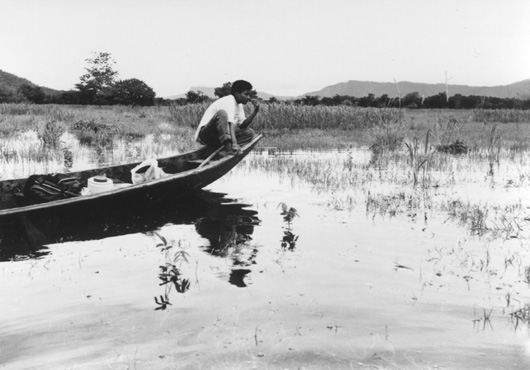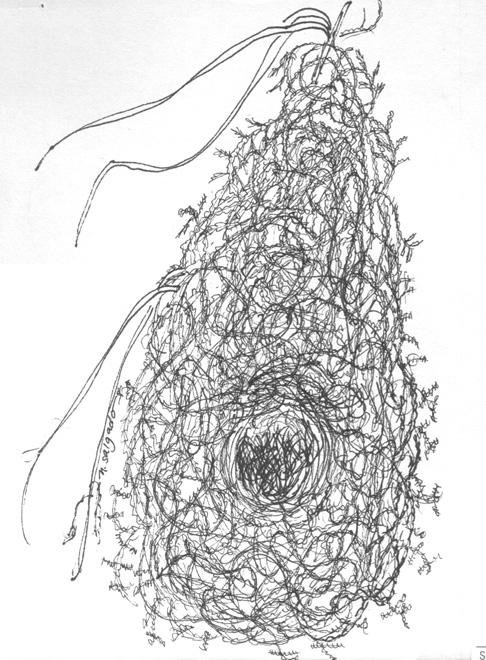ZOOPHARMACOGNOSY ABSTRACTS
Zoopharmacognosy of Breeding Neotropical Birds: Chemical Ecology
of Nest Materials and Substrates
Salgado, N.R.1, D. Rosane2, F.I.
Michelangeli3, and E. Rodriguez1
(1Cornell University,
2Fundación Terramar,
3IVIC; Research conducted
at the Yutajé research station and IVIC, Venezuela 1997)
From the study of "toxic flesh" Pithoui bird in New Guinea to birds rolling
in ants and limes as insect/acari repellent of sorts, to raptors adorning
their homes with fresh sprays to keep their nests free of pests attracted
by meat, the field of avian/plant/arthropod chemical ecology is new but expanding
with many application and implications. In the early to mid 1997 wet season
at Yutajé, Venezuela, approximately 40 nesting sites have been found
including those of species never yet sighted nesting. Of these, about 25%
have been observed to successfully fledge young, indicating a formidable
predation and parasitism threat. Diverging from the traditional strategies
of studying bioactive chemicals, and similarly, avian breeding, which look
at spatial, temporal, and reproductive strategies, studies have been undertaken
to further explore the chemical ecology of plant building materials of three
types of nesters. Specifically, those using bryophytes, palm fibers/roots,
and bird nesting on substrates inhabited by social insects. Field work and
records were conducted in Varzea forest, savanna, and river margin
areas outlying Yutajé. Solvent extraction, TLC analysis, antihelminthic
and anti-bacterial assays, nutritional analyses, ecological evaluation, as
well as local knowledge of the nest building materials have been employed
in investigation. What has ensued has been the exploration of the possible
self medicating (in anti-parasitic/ immunoboosting) properties of plants
used in nests or in the case of nesters neighboring conceivable dangerous
social insects, potential mutualisms or usage of nest substrate secondary
compound. Results suggest the selection of bioactive plants for nesting strategy.

A Piaroa collaborator navigates through the flooded savannas near Yutajé
by curiara, or dugout canoe.
Photo by Mauricio Ramia

A view from the Piaroa village at Caño Santo.
Photo by Gustavo Azenha '98

A nest found in the understory of terra firme forest. The nest material includes
mosses and palm fibers.
Drawing by Nicole Salgado '99

A nest found on the river margin of varzea forest. The nest is of
Hypocnemoides melanopogon (the black-chinned antbird) and appears
to me made of fibers from the palm genus Oenocarpus.
Drawing by Nicole Salgado '99
return to Emanations vol.1: no.1 contents page



